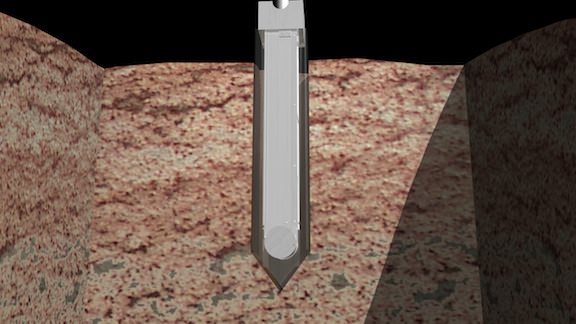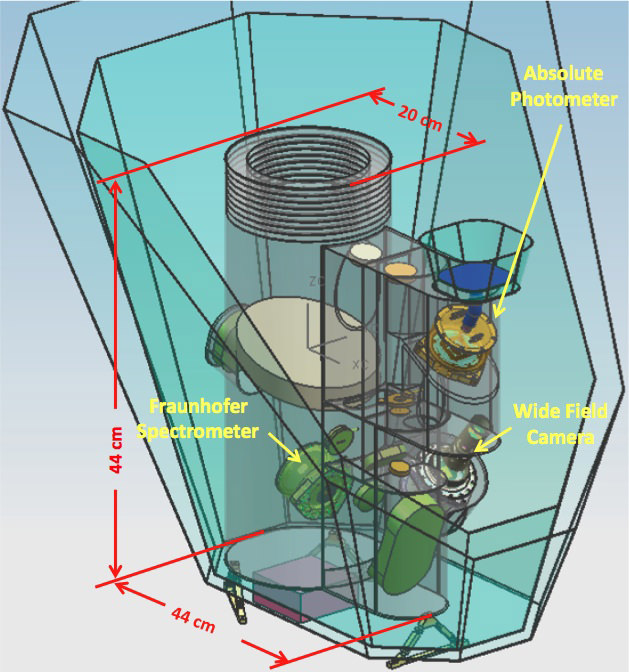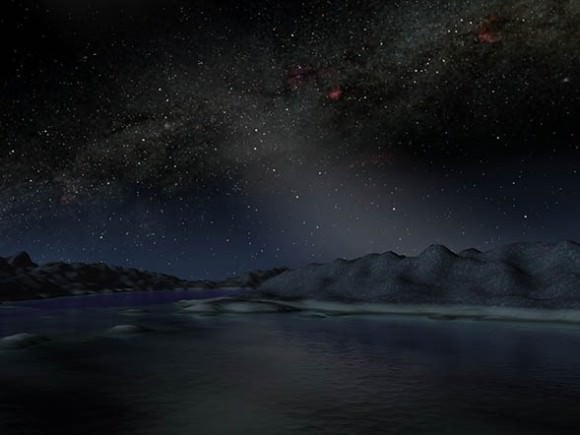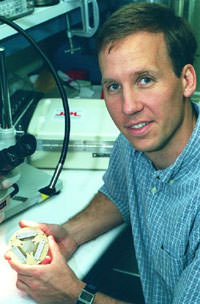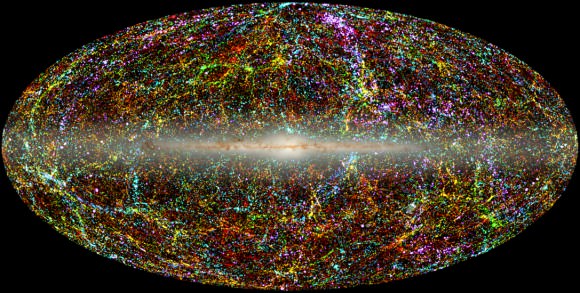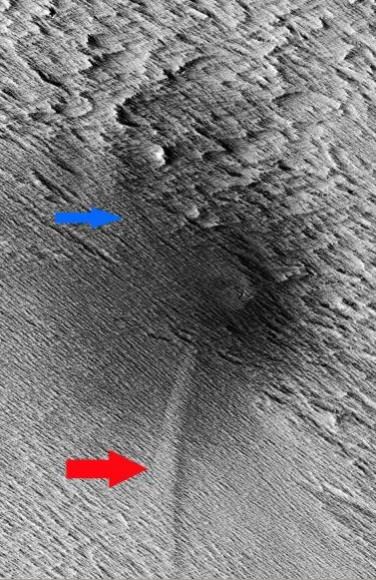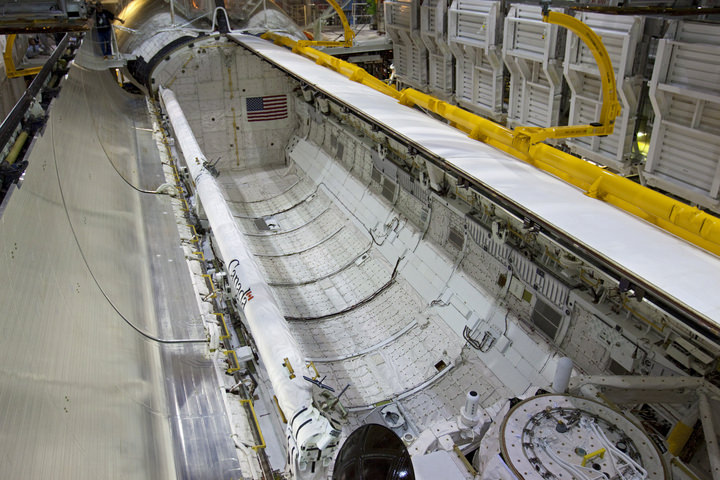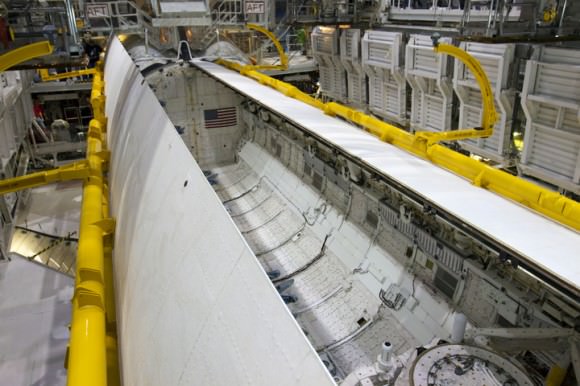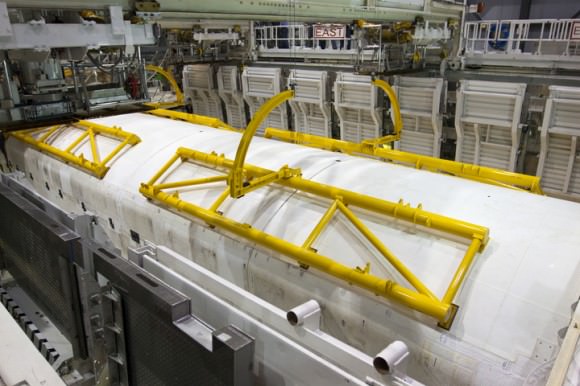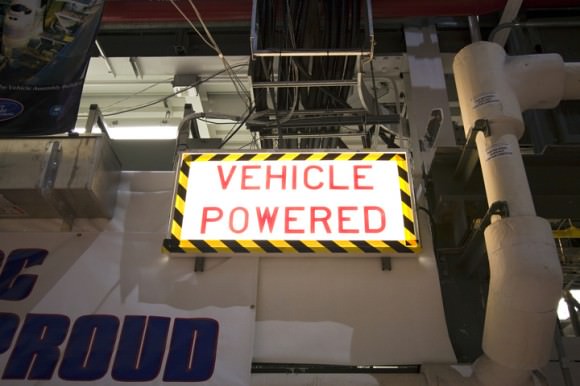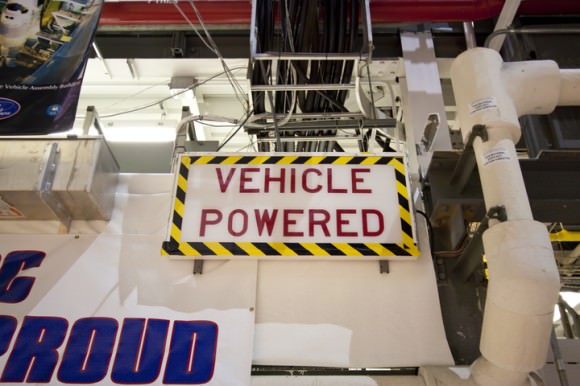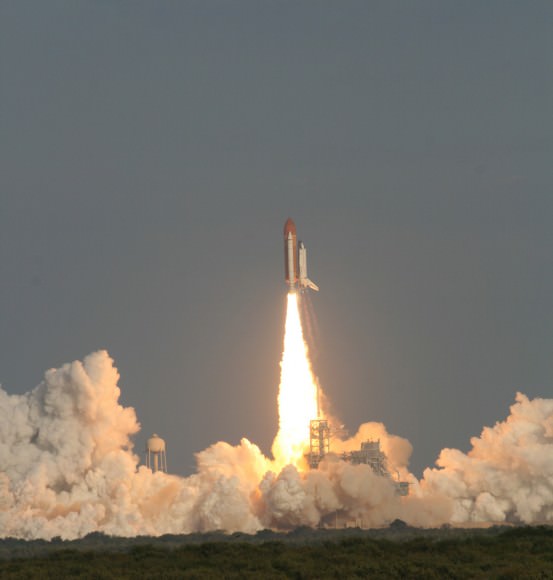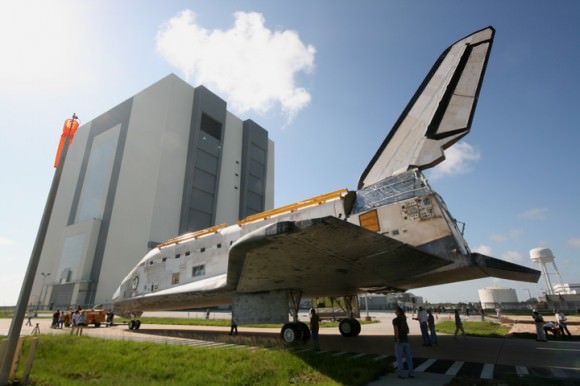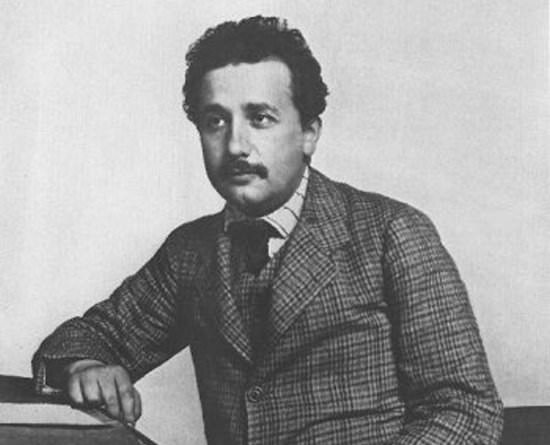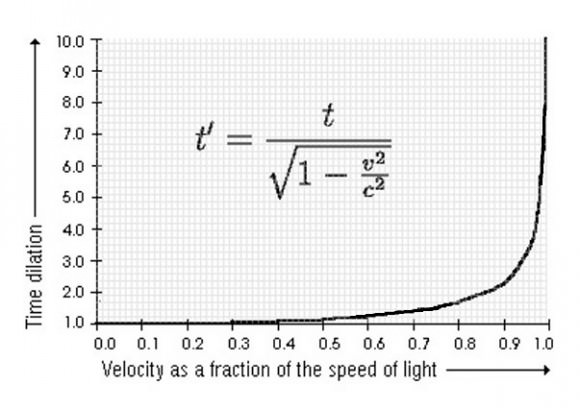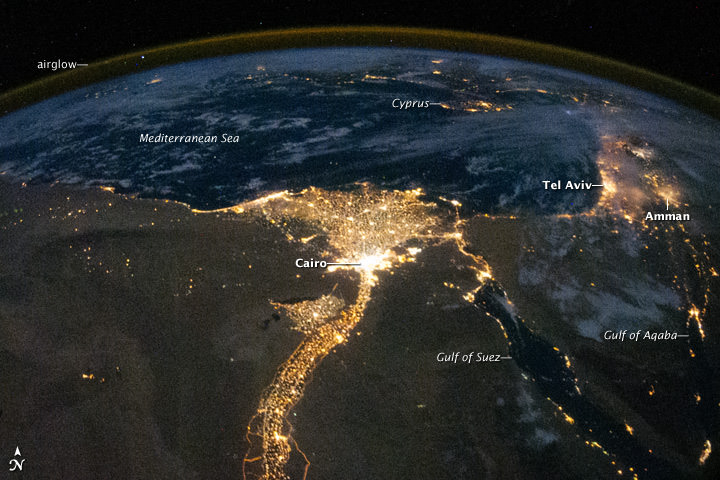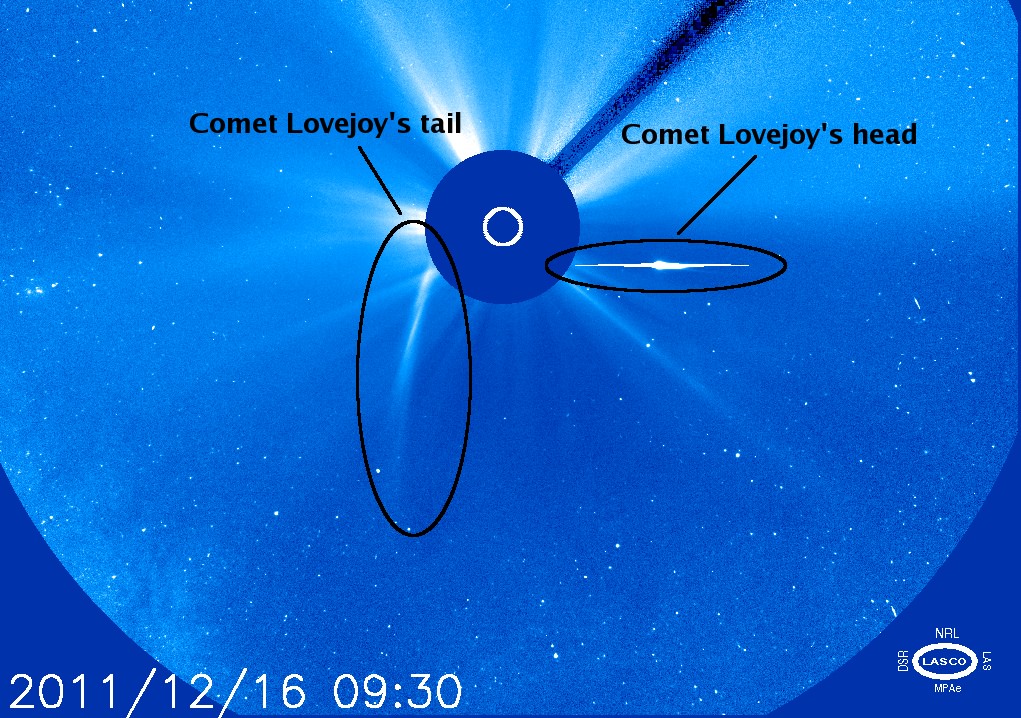[/caption]
It’s not easy to sample a comet. These outer solar system travelers speed around the inner solar system at 241,000 km/h (150,000 mph) – twisting and turning while spewing chunks of ice, dust and debris. To consider landing on one becomes a logistical nightmare, but how about shooting at it? Why not send a mission to rendezvous with these frozen, inhospitable rocks and insert a probe? A method like this could even mean a sample could be taken where a landing would be impossible!
Thanks to the work of scientists at NASA’s Goddard Space Flight Center in Greenbelt, Maryland, a new comet “harpoon” is being designed to make comet sample returns not only more efficient, but more detailed.
Roughly the size of a clothes closet, this syringe-like probe stands roughly two meters tall and will be inserted with a cross-bow like arrangement that will contact the surface of the comet. Positioned to fire vertically downward, this bow arrangement consists of a pair of truck leaf springs and 1/2 inch steel cable.. an arrangement which could fire up to a mile if pointed in the wrong direction! When it impacts, an electric winch will draw the bow back into position and eject the harpoon with 1,000 pounds of force at 100 feet per second.
So what would it be like to witness the harpooning of the cosmic whale? An explosive adventure, to be sure. Donald Wegel of NASA Goddard, lead engineer on the project, has been experimenting with the ballista and the core sample box in various impact environments. According to the press release, the resultant impact is something of a combination of rifle report and cannon blast.
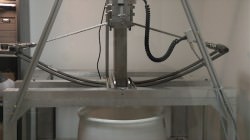
“We had to bolt it to the floor, because the recoil made the whole testbed jump after every shot,” said Wegel. “We’re not sure what we’ll encounter on the comet – the surface could be soft and fluffy, mostly made up of dust, or it could be ice mixed with pebbles, or even solid rock. Most likely, there will be areas with different compositions, so we need to design a harpoon that’s capable of penetrating a reasonable range of materials. The immediate goal though, is to correlate how much energy is required to penetrate different depths in different materials. What harpoon tip geometries penetrate specific materials best? How does the harpoon mass and cross section affect penetration? The ballista allows us to safely collect this data and use it to size the cannon that will be used on the actual mission.”
Studying comet core samples will provide researchers with important information on the original solar nebula and help us to further understand how life may have originated. “One of the most inspiring reasons to go through the trouble and expense of collecting a comet sample is to get a look at the ‘primordial ooze’ – biomolecules in comets that may have assisted the origin of life,” says Wegel. Comet sample return missions – such as the one from Wild 2 – have shown us that that amino acids exist in these inhospitable places, yet may have helped stimulate life here on Earth.
However, there’s more to the story than just searching out reasons for life… the biggest being the preservation of life itself. As we know, there’s always a possibility that a comet could impact Earth and create an extinction level event. By understanding comet composition, we can get a better grip on what we might need to do should a cataclysmic scenario rear its ugly head. For example, we’d know if a certain type of comet might tend to fragment – or another explode. “So the second major reason to sample comets is to characterize the impact threat,” according to Wegel. “We need to understand how they’re made so we can come up with the best way to deflect them should any have their sights on us.”
“Bringing back a comet sample will also let us analyze it with advanced instruments that won’t fit on a spacecraft or haven’t been invented yet,” adds Dr. Joseph Nuth, a comet expert at NASA Goddard and lead scientist on the project.
If we were to be in a movie, perhaps we might consider getting a comet sample through a method like drilling – but lack of gravity on these small, moving worlds isn’t going to allow that to happen. “A spacecraft wouldn’t actually land on a comet; it would have to attach itself somehow, probably with some kind of harpoon. So we figured if you have to use a harpoon anyway, you might as well get it to collect your sample,” says Nuth.
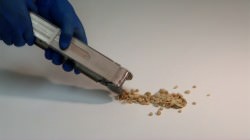
At the present, the design team is currently hard at work studying the harpoon’s reactions to different mediums – and what needs to be done to sample and collect what they might encounter. This isn’t easy considering they are working with a basic unknown.
“You can’t do this by crunching numbers in a computer, because nobody has done it before — the data doesn’t exist yet,” says Nuth. “We need to get data from experiments like this before we can build a computer model. We’re working on answers to the most basic questions, like how much powder charge do you need so your harpoon doesn’t bounce off or go all the way through the comet. We want to prove the harpoon can penetrate deep enough, collect a sample, decouple from the tip, and retract the sample collection device.”
Nothing will be left to chance, however. By creating multiple tips, collection devices and planning for different firing techniques and needs, the team is sure to make the most of their research dollars and the spacecraft that will be available to them. To further assist in their planning, they will also be able to use data from the current Rosetta mission and its lander, Philae, which will hook up with “67P/Churyumov-Gerasimenko” in 2014.
“The Rosetta harpoon is an ingenious design, but it does not collect a sample,” says Wegel. “We will piggyback on their work and take it a step further to include a sample-collecting cartridge. It’s important to understand the complex internal friction encountered by a hollow, core-sampling harpoon.” Even more information will be added from recent NASA mission, OSIRIS-REx (Origins, Spectral Interpretation, Resource Identification, Security — Regolith Explorer), which is an asteroid sample return mission. It will all add up to some very unique findings and one thing we do know is…
“Admiral? Thar’ be whales here…”

